Björn Snellmanfounder of DAXION Group LLC |
||
|
Updated: October 1st, 2011. Chapters 
The Early Years |
||
|
Born 1969 in Jakobstad, Finland, where I also grew up. Early on I decided I wanted to study and learn business management, in order to go in to business of my own later on in life. As early as at the age of 13 I began studying business management on my own, by reading books on the subject at the local library. The financial sector was especially interesting, why it was natural to start working at one of the local banks, when it was time for the first job, during summer vacations. I worked all my vacations at the Pedersörenejdens Andelsbank from 1984 through the first days of 1988. I also had a few other minor jobs, in order to gather recourses for future business. |
||
|
But business started earlier, while selling copying-paper to the students attending typewriting classes at the college. Teachers distributed the paper, that I was buying from a local merchant. The operations where very small. Still they kept going for as long as teachers wanted to distribute the paper. This was between the fall of 1986 till the spring of 1990. The copying-paper business actually generated a nice profit. |
||
|
In the fall of 1987 I started my second business; Golden Invest. This was at the global booming period of stock markets in the 80's. Operations consisted of trading stock at the Helsinki Stock Exchange. Business were very good, mainly due to the general growth in stock prices. I had been dealing with stock since 1984, but now it was structured in the form of a small business. Golden Invest and me also draw attention from the media, when I bought stock in a national insurance company through direct marketing. Operation aimed to gain stock held by private households, before the insurance company were to be listed at the Helsinki stock exchange. My youth [18] and the unusual way of obtaining unlisted stock, gained the attention in local and national newspapers. Golden Invest was an unknown actor on the financial arena, and there where unfounded speculation about a possible hostile takeover. Some stock where obtained in this way and profit was made. While studying at JHL, the student organization offered me a seat on the board, which I accepted. Acting as a member of the board and the cashier for the student organization, gave me opportunity to supervise and administrate their café business. |
||
|
In January 1990 I teamed up with my best friend Torbjörn Holm and founded a new company, with him as co-owner. We started off with a little café at the local hospital. Café Relax (right picture) was very small, but operated as from a textbook and also very profitable. We both kept our jobs and operated Café Relax with hired help. Café Relax was accompanied by an other little café, Beda Kantin in the neighboring premises. At this time the operations consisted of two small cafés and a total hired crew of three. Six months in to this new business, I quit my day job and started to work fulltime with our new company. Previous businesses where terminated and ambitious plans where made to make the new company grow. There where an other café, a large one, in the same hospital, and plans where made and action taken in order to take over this business as well. This café where lost to competitors, due to our inexperience about politics and facts of life. At the same time, two other businesses where examined and evaluated in order to take them over. The first one was dismissed as not interesting, a restaurant in a neighboring town. The other one was a gas station operated on franchise for Finnish gas station network "Union", later formed into Neste Oil gas station network. |
||
|
The gas station was to be transformed from a full-service station into an 24h automated gas station with adjacent and independent café/restaurant and service functions. After successful negotiations, the new operations where taken over and started in late 1990. The existing operations containing Café Relax and Beda Kantin, now got the addition of City Café and S-24. S-24 was the automated around the clock gas station and City Café was a diner/restaurant with a car wash and a service hall.
The diner had seating for 50 guests, a table tennis room as well as a hole-in-the-wall service to outside walk-up guests. The diner also had flipper games and slot machines. Opening hours where from 7 am to 1 am. The total hired crew peaked at 11. Both owners, now age 21, where working fulltime in the business that was relatively extensive. There where 11 operators selling gas on the local market. By the time of take-over our station had a rank of 10 in sales volume. In three months we where able to take the sales of gas from #10 to #2 in volume rank. We stayed at 2nd rank for 18 months, from March 1991 to September 1992, with a sales volume close to 250,000 gallons a year. The main stream of profit was coming from gas sales and flipper & slot machine commissions. The rapid expansion had initially drawn a large loss on the new business. In 1991 I bought out my best friend and took over the business on my own. We parted as friends and are still best friends, both living here in Sweden, Stockholm area. The restaurant operations where rapidly and successfully turned into producing profit. But the expansion had been too fast and early losses, too large. This is why all restaurant operations where to be terminated in early 1992. The S-24 gas station was kept until fall that year. During 1991 I worked a total of 5,200 hours, which is to be compared with my present fulltime corporate job of only 1,900 hours a year. |
||
|
In 1992 the Finnish economy was in a deep recession with large unemployment, resulting in an extremely cautious banking industry. After businesses had been terminated I again teamed up with my best friend. In January 1993 we left Jakobstad, Finland for Stockholm, Sweden pursuing better conditions for the future.
The bar still exists at the same location, but is now redesigned and renamed to "The Bishops Arms". Before I ended my career on Tre Remmare I had the chance of doing some time as a waiter too. I worked at Tre Remmare from 1993 to 1995, having lots of fun while learning a lot from my highly skilled colleagues. Some of these people, grew so close I still stay in contact with them. |
||
|
For many people McDonald's is the first job that they have. I was 26 when I started at the first McDonald's restaurant in Sweden. It was a franchise operated by Gunder and Gunilla Löfgren at Kungsgatan 4, Stockholm. The Löfgrens had been operating the restaurant since 1986, and it was first opened for business back in 1973. I can still today say, that this was my best employer, all time. I started as everybody else in the kitchen, with cheeseburgers. After the first day I was absolutely convinced that I had made a mistake and wanted to quit. But for some reason I went there for a second day. This day I noticed that this business was like no other that I had encountered. I made my observations with experience from my own business and Tre Remmare. I saw that everything was documented, goals where set and followed up. They knew exactly what their profit was, constantly. The past hour was summarized one minute after it was finished.
My best friends of today are people I worked with at McDonald's. We have all moved on to other careers now. Gunder & Gunilla, my mentors, now operate a small hotel, the Art Hotel. When I was offered the opportunity to participate in the McDonald's internal leadership training program, I thankfully accepted. First, I worked as a swing trainee, then as a shift leader and finally as first assistant restaurant manager, with responsibility for the crew recruiting and planning. I held the last position for nearly two of the three years I spent at McDonald's. During this period I recruited some 200 people that started working with us, this means some 600+ interviews and 1,200+ applications. Productivity improved with as much as 50% during a period of twelve months from 1996 to 1997. The new productivity level was kept for the remaining of my employment. In the summer of 1997 the restaurant was also appointed "Best Hamburger Restaurant in Stockholm 1997" by the readers of DN, a major newspaper, and the listeners of a major radio station. The competition was with all hamburger restaurants in the Stockholm area, not only the 50+ McDonald's, but all others too. With the help of my colleagues and mentors I was able to leave with extensive knowledge about the McDonald's system. McDonald's is not about selling hamburgers, it is about systematically making profits. It was important for me to understand how McDonald's successfully operate 30,000+ restaurants, employ over 1,500,000 people and maintain a system wide sales of more than $33,000 million dollars. |
||
|
This opportunity where also given to me and Kantin Moneo was the perfect place to try the theories out. Kantin Moneo was a newly opened restaurant within the Museum of Contemporary Art (Moderna Museet) at Skeppsholmen, an island in the center of Stockholm. Kantin Moneo was owned and operated by two of the most famous names in the Swedish restaurant industry, Olle Lindberg and Carl Jan Granqvist. Kantin Moneo consisted of a large self serve restaurant, an A la Carte restaurant and a small but exclusive little bar in the adjacent Arkitektur Museet, called Bloms Bar. There where also extensive conference and event operations. Three-course dinners where served for up to 400 guests. Once, an evening in the fall of 1998, we served 750 eating guests simultaneously. We had 400 guests upstairs in the restaurant and 350 in the conference. Frequent visitors, guests, where from the social and cultural elite of Stockholm and Sweden. Among the more prominent guests, where the King Carl XVI Gustaf of Sweden, Prime Minister Göran Persson of Sweden and other cabinet members as well as other members from the royal curt and the cultural elite. Events where held by the CEO's of listed corporate companies, like Ramqvist of Ericsson and others. The self serve restaurant where frequented by visitors to the museums, both locals and a lot of tourists.
I used the experience from McDonald's to set up steering parameters for the profitability and crew management. I considered the results a success since the productivity was increasing rapidly. The challenge was that the first six months of operations previous to my employment, the restaurant had faced a larger number of guests than where expected and planned for. The obvious solution that had been used, was to hire more people. By the time I started, the staff where oversized and the rush to the new museums where decreasing. The coming months consisted of increasing profitability through higher productivity at the same time as the number of guests where decreasing along with the sales in the self serve restaurant. Six months into the mission, sales and the number of guests where evening out, normalizing. Successfully I managed to decrease the labor force and reorganize the operations so that when I left Kantin Moneo, after nine months, the business was stable and profitable. I was very content, proving to myself, that my theories about implementing my ideas from McDonald's had worked out as expected. |
||
|
After 11 years in the restaurant business, I felt there where little left for me to prove there. The next step was to leave my restaurant career and move over to retail. Equipped with extensive operational experience, good leadership skills and ability, combined with a strong ambition to "systematically making profits", I concluded there is more to both prove and improve, within retail. Choice fell on IKEA with it's unique concept and unprecedented success. The founder of IKEA, Ingvar Kamprad, is a tycoon that has built one of the worlds largest retailing brands and this without listing his company on any stock exchange. Kamprad has kept the company in family control and IKEA is growing from profitability, within it's own business. Profits provide and feed the growth of IKEA. IKEA - Improving check-out operations
IKEA is very strong when it comes to purchasing and logistics, as well as in sales concept. I discovered that IKEA's potential lies in the fields of controlling and administration. Immediately I started working with crew scheduling and crew training. With the colleagues in the check-out management team, we reorganized the recruiting process and crew schedules to be more flexible. Crew training was developed towards a security focus and documented. The same crew training program is still used today. We had a team of 100+ cashiers working at the check-out.
IKEA - Adding to the IKEA concept In 2001 I was offered the opportunity to take part in a global project within IKEA aiming to recover the cost for returned goods. Recovery should work in two ways; reducing reason for costs and recover costs acquired. The project objective was to create a new concept for a new department to be added to the chain of close to 200 worldwide IKEA stores.
For one year the operations where tested, organized and retested and documented, thus becoming the newest addition to the IKEA concept. The pilot departments at the four stores where considered to be a success. The new concept where implemented to IKEA stores worldwide in 2002 and 2003. After the project test period ended I continued as a department manager for Recovery, at the Barkarby store. The success of the recovery projects ended up saving over $200 million dollars yearly for IKEA retail. The recovery projects also took the IKEA store controlling one step further. IKEA - Controlling: Goals/Budget 2004 - 2006 & 2008 In the spring of 2004 I was given the chance to participate as one of a two member team with the objective to make the store goals (budget), for IKEA Barkarby. This worked out well and added to my experience. I repeated this mission in 2005, 2006. In 2008 it was time for round four, this time also as kind of a mentor for the new operations manager. The budget size is above 100 million EUR. The goal planning/budgeting is done yearly, in February - March.
Responsibilities also included safety; preventing losses due to hazards like fire and accidents. I'm proud to say that the safety & security at IKEA Barkarby improved from a very good level and placed the Barkarby store on the IKEA-map as a fore-runner on safety & security issues. Because of this, I had the opportunity to take part in the training and development of my colleagues on other IKEA stores both in Sweden and in Russia, including Country Security Managers. I was also repeatedly consulted on specific issues both nationally and globally. In 2007, I was in focus because of a software tool, I've created in VBA for Excel, enabling cashier performance monitoring, by collecting and showing statistics in Excel. The visual basic code also scans for risk factors from cashier behavioral patterns and signals when attention is required. The tool was implemented on all the stores in Sweden in 2007, now providing department managers easy recognition of whom in their teams that need the most focus and attention. The Barkarby success comes from implementing my acquired strong and clear leadership, thus enabling the Barkarby store team to focus on the safety and security issues as an integrated part of all store employees' day-to-day business. IKEA - The Russian Expansion...
Some of the acheivements in Ekaterinburg are two trained successors, one still in the company with a bright future. Staff planning was implemented as a process and are now a natural part of the day to day running business of the store. This contributed to the 55 % turnover increase over two years. As a consequence, the productivity increased with 75 % in the same time. The majority of this development was in the aftermath of the global crisis 2008. At the time of my leaving, IKEA Ekaterinburg had one of the best development of the Russian IKEA stores. Improvments was seen in more or less all areas and KPI's. However, the fantastic Ekaterinburg development can not be contributed to me alone, but as a success from the whole store team of co-workers and managers. Thank you all, you know who you are! The Ekaterinburg experience, is the most fun one so far, rich on learnings, both for me and many, many other people. IKEA - Khimki store, IKEA's no 2 After two years in Ekaterinburg, I was assigned to IKEA Khimki store in Khimki, Moscow as the Business Navigator & Operations Manager, arriving there in September 2010. This is currently (September, 2011) the second biggest IKEA store in the world by EUR turnover. I am currently in this position. |
||
|
The vision is to achieve a business concept that systematically make profits. In a way, this is developing and implementing my collected experience in a business of my own. The business-ideas have varied over the years, seeking and evolving to the present conviction that internet and online business is the future market. The present operations are totally devoted to the Daxion web sites. The first website, tradeebook.com, opened in late November 2003. That site have been taken down, but out of it emerged the present sites; eBusiness Manual™, Daxion Games™, Daxion Marketplace™ and Daxion Community™. At this time I'm not ready to disclose the concept behind the Daxion web presence, other than this; I am convinced I have now found a successful concept that is being gradually implemented. The parts that are being disclosed, are available through eBusiness Manual™. The process of implementation is, however, very tedious and an ongoing process, spanning over the next coming years. Since 2008, the development have been very slow, since my full time occupation at IKEA is taking most of my available time. These days, Daxion is more an interest than a business. Theoretically, making systematic profits is very easy: identify and copy success-factors from one situation to the next. This is what I do at IKEA and did at Kantin Moneo, with the McDonald's (and other) success-factors. Keep an eye out for Daxion and follow interesting future developments at this web site. |
||
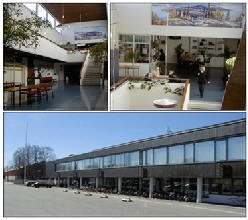 While studying accounting and business management at
Jakobstads Handelsläroverk (JHL) 1985 - 1988,
[commercial college] I started my first business. By the
time I turned age 18, my first business was registered.
While studying accounting and business management at
Jakobstads Handelsläroverk (JHL) 1985 - 1988,
[commercial college] I started my first business. By the
time I turned age 18, my first business was registered. After graduating from JHL with a bachelor degree in
accounting, I worked as a driver at a delivery company,
Pelles Budtjänst. This was in the summer of 1988. In the
fall the same year, I where off to military service for
eight months.
After graduating from JHL with a bachelor degree in
accounting, I worked as a driver at a delivery company,
Pelles Budtjänst. This was in the summer of 1988. In the
fall the same year, I where off to military service for
eight months.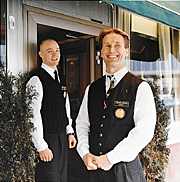
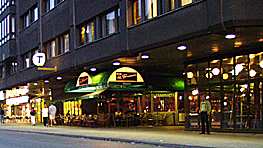 Up on arrival in Stockholm I was determined to learn and
fully understand the restaurant business. I started
working at a nightclub, Tre Remmare in Stockholm City.
Coming from a small town like Jakobstad to Stockholm,
was in it self a valuable experience. Working at a
downtown nightclub and seeing the nightlife of Stockholm
really widened my horizons in the over all looking at
peoples lives and destinies. By now I had gained
experience from business management and leadership
skills from running my own business operations.
Up on arrival in Stockholm I was determined to learn and
fully understand the restaurant business. I started
working at a nightclub, Tre Remmare in Stockholm City.
Coming from a small town like Jakobstad to Stockholm,
was in it self a valuable experience. Working at a
downtown nightclub and seeing the nightlife of Stockholm
really widened my horizons in the over all looking at
peoples lives and destinies. By now I had gained
experience from business management and leadership
skills from running my own business operations. At Tre Remmare I was adding deeper knowledge in
restaurant operations, but more importantly I learned a
lot about people and thus gained people skills. I
started as a busboy and later on worked in the bar
(right picture) as a bartender. In the picture you see
one of my colleagues from that time, Mathias Snive,
standing behind the 95 ft bar. The bar was open from 11
am to 5 am, 7 days a week and still is. Sales peaked at
some 500 gallons of beer a day, in the fall of 1993.
At Tre Remmare I was adding deeper knowledge in
restaurant operations, but more importantly I learned a
lot about people and thus gained people skills. I
started as a busboy and later on worked in the bar
(right picture) as a bartender. In the picture you see
one of my colleagues from that time, Mathias Snive,
standing behind the 95 ft bar. The bar was open from 11
am to 5 am, 7 days a week and still is. Sales peaked at
some 500 gallons of beer a day, in the fall of 1993.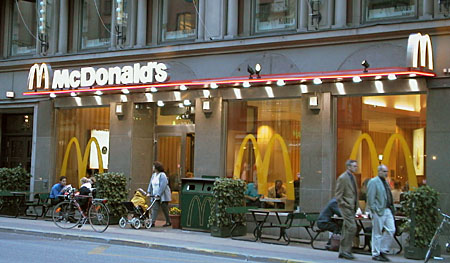 That was when I decided that I had to learn all about
this system before I quit. I stayed there for three
years, to the day, and left 1998 for Kantin Moneo.
That was when I decided that I had to learn all about
this system before I quit. I stayed there for three
years, to the day, and left 1998 for Kantin Moneo.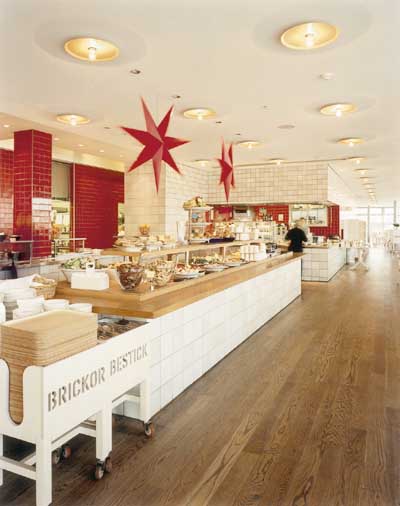 In 1998 I was leaving McDonald's for Kantin Moneo, where
I became the restaurant manager. I wanted to implement
the McDonald's business system into traditional
restaurant business.
In 1998 I was leaving McDonald's for Kantin Moneo, where
I became the restaurant manager. I wanted to implement
the McDonald's business system into traditional
restaurant business.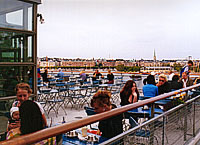 In summary this was a very exiting work environment and
I remember this as a fun time. My mission was to put
profitability into the new restaurant.
In summary this was a very exiting work environment and
I remember this as a fun time. My mission was to put
profitability into the new restaurant.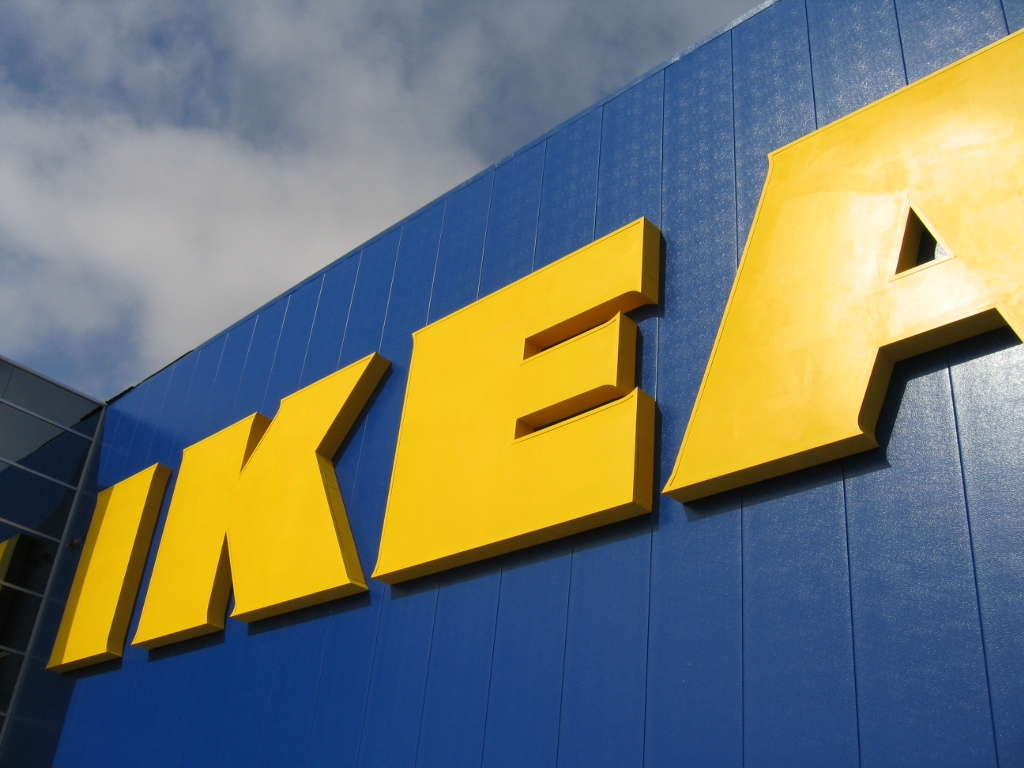
 Between the falls of 2004 and 2008 I was the store security manager at IKEA
Barkarby. This occupation was both very interesting and fun, aiming to prevent and
investigate different types of fraudulent or criminal activities, both internal as well as external.
Between the falls of 2004 and 2008 I was the store security manager at IKEA
Barkarby. This occupation was both very interesting and fun, aiming to prevent and
investigate different types of fraudulent or criminal activities, both internal as well as external.
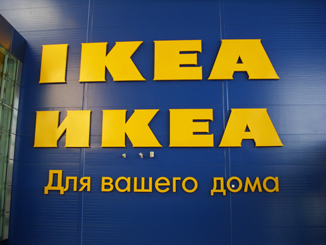 In September 2008, I started as the Operations Manager at
In September 2008, I started as the Operations Manager at